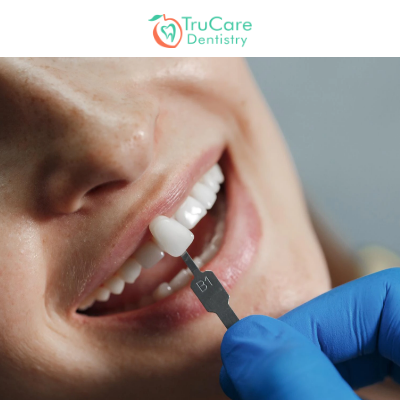 Veneers and lumineers are used for almost the same dental problems and cosmetic dentistry treatments. But they differ from each other in many aspects. If you have to pit veneers vs. lumineers to decide which one is better for you, then you need to know some key differences between them.
Veneers and lumineers are used for almost the same dental problems and cosmetic dentistry treatments. But they differ from each other in many aspects. If you have to pit veneers vs. lumineers to decide which one is better for you, then you need to know some key differences between them.
In this blog post, we have listed nine key differences between veneers and lumineers. If you are confused about whether to choose the former or the latter, then this blog is just for you. Read on and thank us later.
Key Differences Between Veneers & Lumineers
1. Resistance to stain
Veneers’ glazed appearance and non-porous texture, make them look like natural enamel. Being highly stain-resistant, veneers are extremely suitable for severely stained teeth. They are also suitable for browned or yellowed teeth. The edges of veneers, however, may stain after five or more years. If you want a highly stain-resistant option, then veneers are the right choice for you.
Lumineers aren’t resistant to staining and aren’t as effective at hiding damaged or stained teeth. The composite resin cement that’s used to bond the lumineers to the teeth can stain over time. Lumineers are not suitable for severely discolored or stained teeth.
2. Durability
On average, veneers last between ten and fifteen years. They have a high success rate of up to twenty years. They can last more than that when good care is taken. As per some reliable sources, the average survival rate of veneers stood at 97.5 percent.
Lumineers have a marginally lower lifespan compared to veneers. As per some studies, they have a lifespan of up to ten years. There are only a few continuing researches on the longevity of lumineers.
3. Thickness
Veneers are thicker compared to lumineers. An average porcelain veneer has a thickness of about 0.5 mm.
The average thickness of lumineers is just about 0.2 mm. Some lumineers are even thinner than that as the materials used in them make them extremely slim.
4. Opacity
Made of high-quality ceramic, traditional veneers are highly opaque. High opacity plays a crucial role in hiding tooth discoloration and decay as well as resisting stubborn stains on the enamel.
Lumineers, on the other hand, are thinner than veneers. This makes them more translucent and unsuitable for people with stained and discolored teeth.
5. Complexity of procedure
The application of veneers is a more complex process than lumineers. To fit veneers perfectly to the teeth, dentists carefully prep and trim the enamel. After that, they create a mold of teeth and take between three and four weeks to create the right-sized veneers from the mold. Before placing the permanent veneers, the dental professional puts temporary veneers for the time being.
Applying lumineers is a far less complex process. The dentist doesn’t trim the enamel to fit the lumineers. They simply make a mold of the teeth and take nearly two to four weeks to create lumineers. The process doesn’t involve giving temporary lumineers till the custom-made ones are ready.
6. Permanence
As veneers are placed after trimming and cutting the enamel, they are permanent and don’t allow you to make any further alterations to the teeth they’re on. Veneers, however, compromise tooth enamel and make it difficult to reach your gum line while brushing or cleaning. This enhances the risk of developing gum diseases. But veneers can be replaced when they’re cracked or damaged.
Being semi-permanent, lumineers can be easily removed from the teeth. Even though lumineers don’t require the trimming and shaping of the tooth enamel, they still raise the risk of gum diseases as they make it difficult to reach the gum line while brushing or cleaning.
7. Cost
On average, veneers range between $925 and $2,500 for each tooth. Whereas, the average cost of lumineers ranges from $800 to $2,000 per tooth. Veneers are 18.25 to 25 percent more expensive than lumineers as they are made from stronger materials, which make them denser, thicker, and more durable. Also, the process of preparing veneers is much more lengthy and complicated. When it comes to insurance coverage, as both procedures fall under cosmetic dentistry, they don’t qualify for dental insurance.
8. Natural appearance
As lumineers are much thinner and more translucent than veneers, they look and feel more natural compared to the latter. The slim porcelain used in lumineers reflects light just like natural teeth. Being thicker and more opaque, veneers don’t have the same gloss as that lumineers.
9. Suitability for a wide range of cosmetic dentistry problems
Unlike veneers, lumineers can’t address cosmetic dentistry concerns such as crooked or overcrowded teeth. On the other hand, veneers can cover most cosmetic problems.
All in all,
Veneers are the right solution if you don’t want to make constant alterations to your teeth and want a permanent solution for cosmetic issues. On the other hand, lumineers are suitable if you want a less complicated cosmetic dentistry procedure and more natural-looking teeth.
At TruCare Dentistry, we have the right expertise and experience of providing the right cosmetic dentistry treatment as per your needs. If you are looking for cosmetic dentistry treatments in Roswell, GA, or in neighboring areas such as Alpharetta, Dunwoody, Marietta, Milton, Sandy Springs, or Woodstock, contact us today to schedule an appointment.
